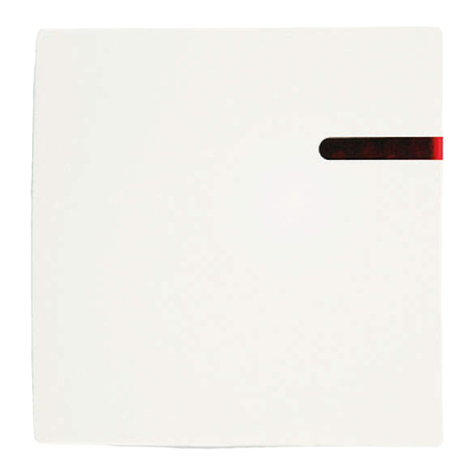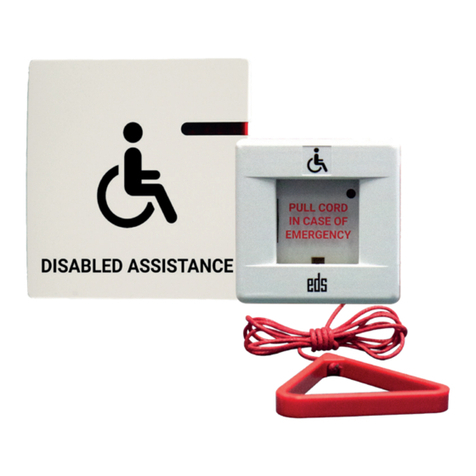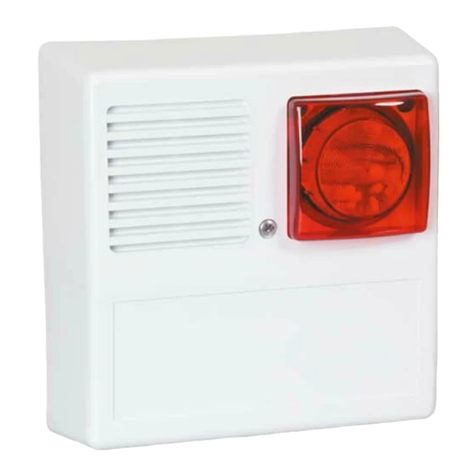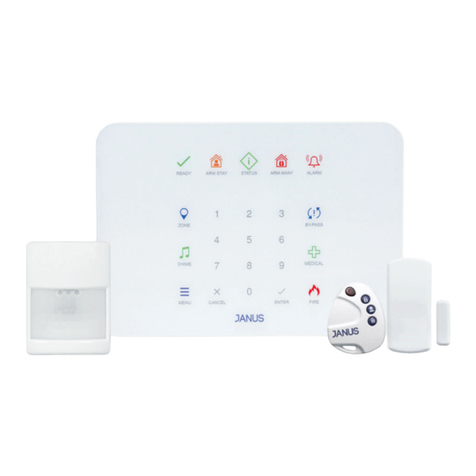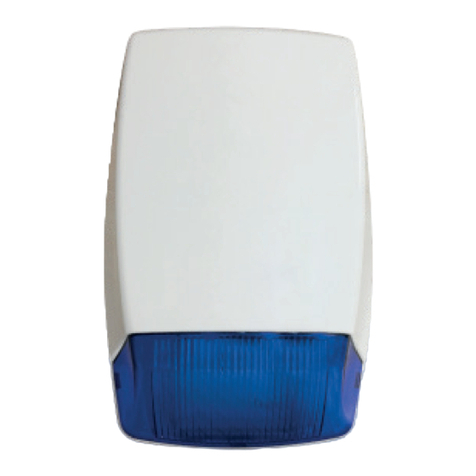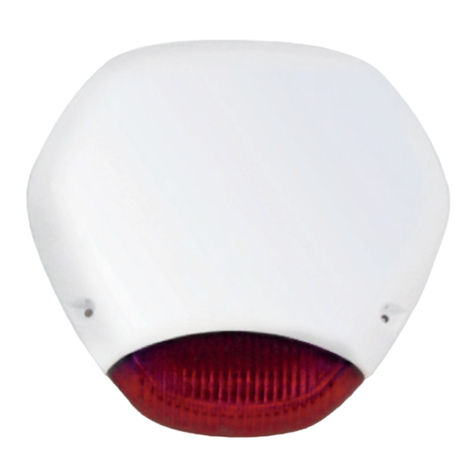
AS240RF-TR
Intrusion Alarm Systems / Wireless Outdoor Sounder
02/03/2017
R3
Address:
Meclis Mah. Teraziler Cad. Hayran Sk. No: 4 34785 Sancaktepe / İstanbul / Turkey +90 216 528 45 00 I [email protected] I www.eds.com.trTEST
REMOVING A SOUNDER
SUPERVISION AND TRIGGERING
When you press and hold the S2 button on the RF module, the
sounder should enter alarm mode and should be silenced when you
release it.
You have to see a tamper fault on the RF Module, when you press
and hold the S2 button on the sounder. When you release it, it should
return to normal.
Otherwise, it means that there is no communication between the
module and the sounder or that the sounder has not been properly
enrolled to the module.
If there is no communication, the location of the sounder should
be changed and if it is not properly enrolled, the sounders should be
erased from the module and enrolled again.
TERMINAL 3 may be used for (-) supervision and TERMINAL 4 for
(+) supervision. When it receives the module supervision signal, the
sounder starts to sound intermittently and the 4 LEDs on the sounder
flash simultaneously. When the supervision signal is stopped, the
sounder is restored to normal.
TERMINAL 5 may be used for (-) supervision and TERMINAL 4 for (+)
triggering. When it receives the module triggering signal, the sounder
starts to sound intermittently and the 4 LEDs on the sounder flash
simultaneously. When the triggering signal is stopped, the sounder is
restored to normal.
If the triggering signal is not stopped, then the sounder will leave the
alarm position and return to its normal status after 5 minutes.
Communication Fault
Low Battery Fault
LED2 and LED4 on the module light up and the TERMINAL 10 draws
the voltage to 0V.
If there is no communication between the sounder and the module
for a period of more than 15 minute, then a communication fault
occurs. This fault is not removed even if the sounder and the module
start communicating again; the module has to be reset via the panel.
LED3 and LED4 on the module light up and the TERMINAL 9 draws
the voltage to 0V.
If the voltage of the battery connected to the sounder drops under
5.4V, a battery fault occurs on the module. When the power is restored
and the battery starts to charge, the fault is automatically removed.
Press the S1 and S2 buttons on the sounder simultaneously and
wait until number 0 appears on the display. With this procedure, the
addresses of the sounders enrolled in the module shall be erased. The
module shall no longer communicate with these sounders.
MONITORING FAULTS
It is possible to determine the faults and the sounder from which the
fault results via the RF module display and the 4 red LEDs.
The sounder numbers are shown on the display as 1, 2, 3, and 4,
respectively. While the sounder number is being displayed, the faults
in the related sounders can be monitored from the 4 red LEDs at the
lower part of the display.
RF MODULE
S1 Sounder addressing button
S2 Alarm test button
DL1 Sounder tamper fault
DL 2 Communication fault
DL 3 Low battery fault
DL 4 General fault
KLEMENS1 12VDC
KLEMENS2 GND
KLEMENS3 - SUPERVISE
KLEMENS4 + SUPERVISE
KLEMENS5 -Trigger
KLEMENS6 + Trigger
KLEMENS7 Sounder tamper relay (COM)
KLEMENS8 Sounder tamper relay (NC)
KLEMENS9 Battery low (Draws to 0V)
KLEMENS10 Communication lost (Draws to 0V)
S1 Address waiting button
SW Tamper connection
CELL Battery connection
S2 Tamper test button
BUZ Buzzer connection
RF SOUNDER
RF MODULE
RF SOUNDER
Sounder Tamper Fault
LED 1 and LED4 on the module light up and the normally-closed
relay is opened.
The sounders enter to an alarm model; if the fault is corrected, then
the sounder is silenced and the fault indications on the module are
cancelled.
If the tamper fault is not corrected, then the sounder is silenced
after 5 minutes. The fault indications on the module will not be
removed until the tamper fault is corrected.












